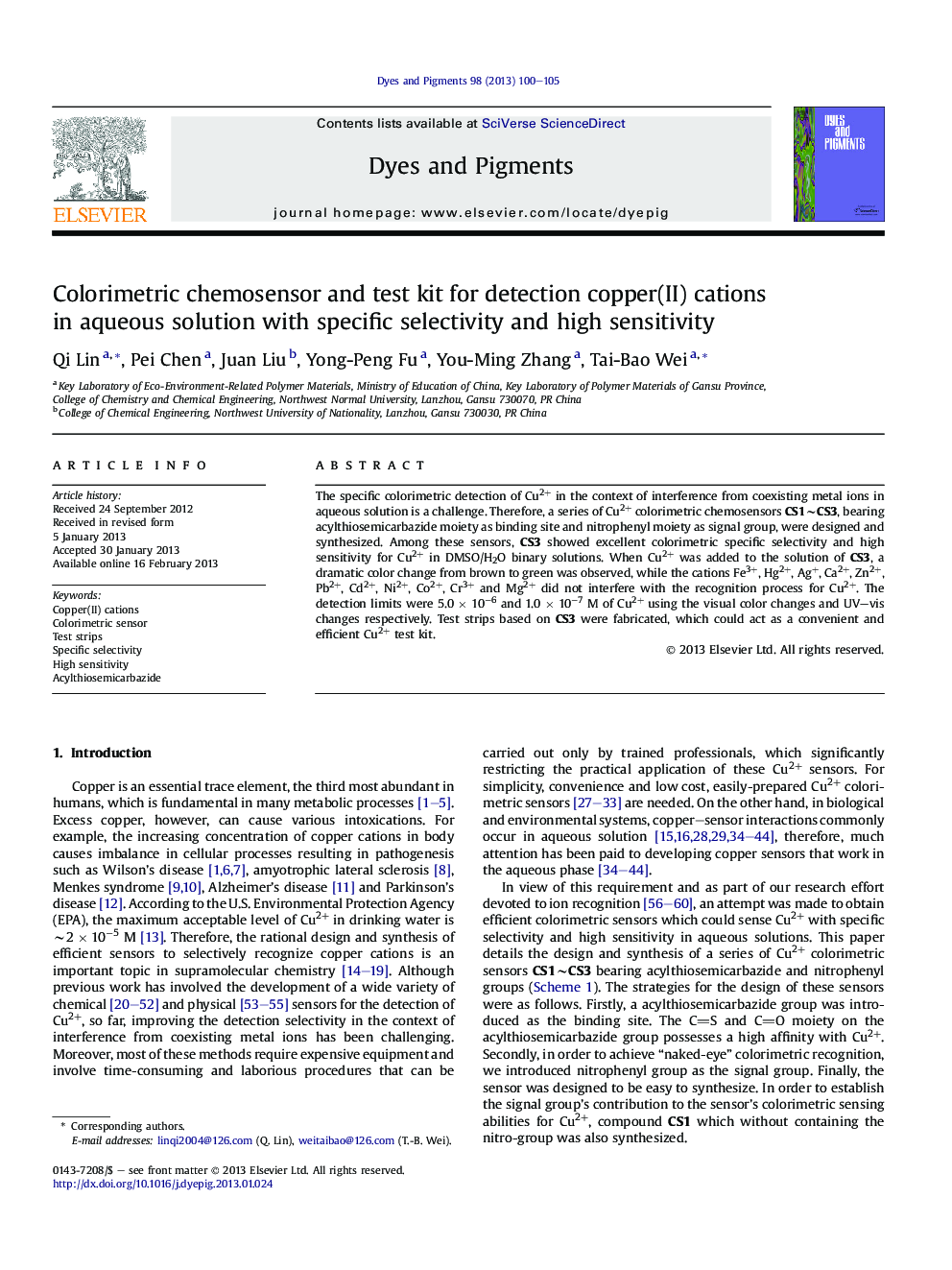| Article ID | Journal | Published Year | Pages | File Type |
|---|---|---|---|---|
| 176616 | Dyes and Pigments | 2013 | 6 Pages |
The specific colorimetric detection of Cu2+ in the context of interference from coexisting metal ions in aqueous solution is a challenge. Therefore, a series of Cu2+ colorimetric chemosensors CS1∼CS3, bearing acylthiosemicarbazide moiety as binding site and nitrophenyl moiety as signal group, were designed and synthesized. Among these sensors, CS3 showed excellent colorimetric specific selectivity and high sensitivity for Cu2+ in DMSO/H2O binary solutions. When Cu2+ was added to the solution of CS3, a dramatic color change from brown to green was observed, while the cations Fe3+, Hg2+, Ag+, Ca2+, Zn2+, Pb2+, Cd2+, Ni2+, Co2+, Cr3+ and Mg2+ did not interfere with the recognition process for Cu2+. The detection limits were 5.0 × 10−6 and 1.0 × 10−7 M of Cu2+ using the visual color changes and UV–vis changes respectively. Test strips based on CS3 were fabricated, which could act as a convenient and efficient Cu2+ test kit.
Graphical abstractFigure optionsDownload full-size imageDownload as PowerPoint slideHighlights► An easy-to-make Cu2+ colorimetric sensor CS3 was designed and synthesized. ► CS3 showed colorimetric specific selectivity for Cu2+ in DMSO/H2O solutions. ► The detection limit is 1.0 × 10−7 M for Cu2+, pointing to the high sensitivity. ► Convenient and efficient Cu2+ test strips based on CS3 were fabricated.
